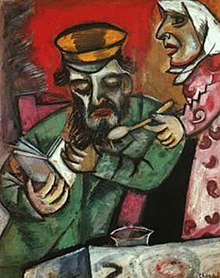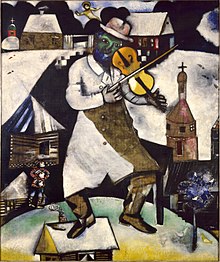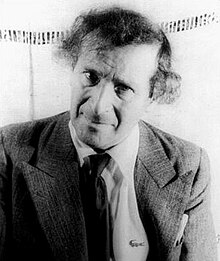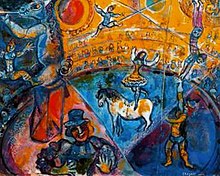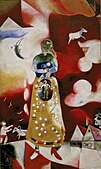#RIP #OTD in 1881 Russian composer (opera Boris Godunov, the orchestral tone poem Night on Bald Mountain, piano suite Pictures at an Exhibition) Modest Mussorgsky died in Saint Petersburg, aged 42. Tikhvin Cemetery of the Alexander Nevsky Monastery in Saint Petersburg
#RIP #OTD in 1929 professor, poet (“America the Beautiful”), author, social reformist, Katharine Lee Bates died in Wellesley, Massachusetts, while listening to a friend read poetry to her, aged 69. Oak Grove Cemetery at Falmouth, Massachusetts
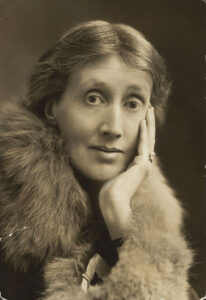 On this day in 1941, writer Virginia Woolf put on her overcoat, filled its pockets with stones, walked into the River Ouse near her home in Lewes, East Sussex, England, and drowned herself, at the age of 59. Born Adeline Virginia Stephen at 22 Hyde Park Gate in London on 25 January 1882. In my opinion, one of the foremost modernists of the twentieth century. During the interwar period, Woolf was a significant figure in London literary society and a central figure in the influential Bloomsbury Group, an influential group of associated English writers, intellectuals, philosophers and artists. Her most famous works include the novels Mrs Dalloway (1925), To the Lighthouse (1927) and Orlando (1928), and the book-length essay A Room of One’s Own (1929), with its famous dictum, “A woman must have money and a room of her own if she is to write fiction.” Woolf suffered from severe bouts of mental illness throughout her life, thought to have been the result of what is now termed bipolar disorder. Virginia Stephen married writer Leonard Woolf on 10 August 1912. Despite his low material status (Woolf referring to Leonard during their engagement as a “penniless Jew”) the couple evidently shared a close bond. The ethos of the Bloomsbury group encouraged a liberal approach to sexuality, and in 1922 she met the writer and gardener Vita Sackville-West, wife of Harold Nicolson. After a tentative start, they began a sexual relationship. In 1928, Woolf presented Sackville-West with Orlando, a fantastical biography in which the eponymous hero’s life spans three centuries and both sexes. Nigel Nicolson, Sackville-West’s son, wrote “The effect of Vita on Virginia is all contained in Orlando, the longest and most charming love letter in literature, in which she explores Vita, weaves her in and out of the centuries, tosses her from one sex to the other, plays with her, dresses her in furs, lace and emeralds, teases her, flirts with her, drops a veil of mist around her”. After their affair ended, the two women remained friends until Woolf’s death.
On this day in 1941, writer Virginia Woolf put on her overcoat, filled its pockets with stones, walked into the River Ouse near her home in Lewes, East Sussex, England, and drowned herself, at the age of 59. Born Adeline Virginia Stephen at 22 Hyde Park Gate in London on 25 January 1882. In my opinion, one of the foremost modernists of the twentieth century. During the interwar period, Woolf was a significant figure in London literary society and a central figure in the influential Bloomsbury Group, an influential group of associated English writers, intellectuals, philosophers and artists. Her most famous works include the novels Mrs Dalloway (1925), To the Lighthouse (1927) and Orlando (1928), and the book-length essay A Room of One’s Own (1929), with its famous dictum, “A woman must have money and a room of her own if she is to write fiction.” Woolf suffered from severe bouts of mental illness throughout her life, thought to have been the result of what is now termed bipolar disorder. Virginia Stephen married writer Leonard Woolf on 10 August 1912. Despite his low material status (Woolf referring to Leonard during their engagement as a “penniless Jew”) the couple evidently shared a close bond. The ethos of the Bloomsbury group encouraged a liberal approach to sexuality, and in 1922 she met the writer and gardener Vita Sackville-West, wife of Harold Nicolson. After a tentative start, they began a sexual relationship. In 1928, Woolf presented Sackville-West with Orlando, a fantastical biography in which the eponymous hero’s life spans three centuries and both sexes. Nigel Nicolson, Sackville-West’s son, wrote “The effect of Vita on Virginia is all contained in Orlando, the longest and most charming love letter in literature, in which she explores Vita, weaves her in and out of the centuries, tosses her from one sex to the other, plays with her, dresses her in furs, lace and emeralds, teases her, flirts with her, drops a veil of mist around her”. After their affair ended, the two women remained friends until Woolf’s death.
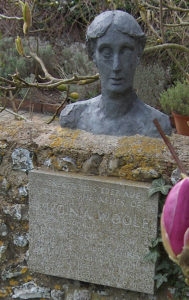 The Final Footprint – Woolf’s body was not found until 18 April 1941. Woolf was cremated and her husband buried her cremated remains under an elm in the garden of Monk’s House, their home in Rodmell, Sussex. Who’s Afraid of Virginia Woolf? is a Tony Award-winning 1962 play by Edward Albee. It examines the breakdown of the marriage of a middle-aged couple, Martha and George. The title is a pun on the song “Who’s Afraid of the Big Bad Wolf?” from Walt Disney’s The Three Little Pigs (1933), substituting Woolf’s name. Martha and George repeatedly sing this version of the song throughout the play. The film adaptation was released in 1966, written by Ernest Lehman, directed by Mike Nichols, and starring Richard Burton, Elizabeth Taylor, George Segal and Sandy Dennis. Michael Cunningham’s 1998 Pulitzer Prize–winning novel The Hours focused on three generations of women affected by Woolf’s novel Mrs Dalloway. In 2002, a film version of the novel was released starring Nicole Kidman as Woolf, a role for which she won the 2002 Academy Award for Best Actress. The film also starred Julianne Moore and Meryl Streep and featured an award-winning score by American composer Philip Glass.
The Final Footprint – Woolf’s body was not found until 18 April 1941. Woolf was cremated and her husband buried her cremated remains under an elm in the garden of Monk’s House, their home in Rodmell, Sussex. Who’s Afraid of Virginia Woolf? is a Tony Award-winning 1962 play by Edward Albee. It examines the breakdown of the marriage of a middle-aged couple, Martha and George. The title is a pun on the song “Who’s Afraid of the Big Bad Wolf?” from Walt Disney’s The Three Little Pigs (1933), substituting Woolf’s name. Martha and George repeatedly sing this version of the song throughout the play. The film adaptation was released in 1966, written by Ernest Lehman, directed by Mike Nichols, and starring Richard Burton, Elizabeth Taylor, George Segal and Sandy Dennis. Michael Cunningham’s 1998 Pulitzer Prize–winning novel The Hours focused on three generations of women affected by Woolf’s novel Mrs Dalloway. In 2002, a film version of the novel was released starring Nicole Kidman as Woolf, a role for which she won the 2002 Academy Award for Best Actress. The film also starred Julianne Moore and Meryl Streep and featured an award-winning score by American composer Philip Glass.
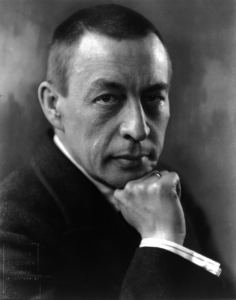 On this day in 1943, composer, virtuoso pianist, and conductor of the late Romantic period, Sergei Rachmaninoff died at his home in Beverly Hills from melanoma at the age of 69. Born Sergei Vasilyevich Rachmaninoff on 1 April [O.S. 20 March] 1873 on one of two family estates; either Oneg, near Veliky Novgorod, or Semyonovo, near Staraya Russa. Rachmaninoff took up the piano at the age of four. He graduated from the Moscow Conservatory in 1892, having already composed several piano and orchestral pieces. In 1897, following the negative critical reaction to his Symphony No. 1, Rachmaninoff entered a four-year depression and composed little until successful therapy allowed him to complete his enthusiastically received Piano Concerto No. 2 in 1901. In the course of the next sixteen years, Rachmaninoff conducted at the Bolshoi Theatre, relocated to Dresden, Germany, and toured the United States for the first time. Rachmaninoff often featured the piano in his compositions, and he explored the expressive possibilities of the instrument through his own skills as a pianist.
On this day in 1943, composer, virtuoso pianist, and conductor of the late Romantic period, Sergei Rachmaninoff died at his home in Beverly Hills from melanoma at the age of 69. Born Sergei Vasilyevich Rachmaninoff on 1 April [O.S. 20 March] 1873 on one of two family estates; either Oneg, near Veliky Novgorod, or Semyonovo, near Staraya Russa. Rachmaninoff took up the piano at the age of four. He graduated from the Moscow Conservatory in 1892, having already composed several piano and orchestral pieces. In 1897, following the negative critical reaction to his Symphony No. 1, Rachmaninoff entered a four-year depression and composed little until successful therapy allowed him to complete his enthusiastically received Piano Concerto No. 2 in 1901. In the course of the next sixteen years, Rachmaninoff conducted at the Bolshoi Theatre, relocated to Dresden, Germany, and toured the United States for the first time. Rachmaninoff often featured the piano in his compositions, and he explored the expressive possibilities of the instrument through his own skills as a pianist.
Following the Russian Revolution, Rachmaninoff and his family left Russia; in 1918, they settled in the United States, first in New York City. With his main source of income coming from piano and conducting performances, demanding tour schedules led to a reduction in his time for composition. Between 1918 and 1943, he completed six works, including Rhapsody on a Theme of Paganini, Symphony No. 3, and Symphonic Dances. By 1942, his failing health led to his relocation to Beverly Hills, California. One month before his death Rachmaninoff was granted American citizenship.
The Final Footprint

His funeral took place at the Holy Virgin Mary Russian Orthodox Church on Micheltorena Street in Silver Lake, Los Angeles. In his will, Rachmaninoff wished to be buried at Novodevichy Cemetery in Moscow, the same as Scriabin, Taneyev, and Chekhov, but his American citizenship could not see the request through. Instead, he was interred at Kensico Cemetery in Valhalla, New York on 1 June 1943.
In August 2015, Russia announced its intention to seek reburial of Rachmaninoff’s remains in Russia, claiming that Americans have neglected the composer’s grave while attempting to “shamelessly privatize” his name. The composer’s descendants have resisted this idea, pointing out that he died in the U.S. after spending decades outside of Russia in self-imposed political exile.
After Rachmaninoff’s death, poet Marietta Shaginyan published fifteen letters they exchanged from their first contact in February 1912 and their final meeting in July 1917. The nature of their relationship bordered on romantic, but was primarily intellectual and emotional. Shaginyan and the poetry she shared with Rachmaninoff has been cited as the inspiration for the six songs that make up his Six Songs, Op. 38.
A statue marked “Rachmaninoff: The Last Concert”, designed and sculpted by Victor Bokarev, stands at the World’s Fair Park in Knoxville, Tennessee as a tribute to the composer.
Other notable final footprints at Kensico include; Anne Bancroft, Tommy Dorsey, Geraldine Farrar, Lou Gehrig, Robert Merrill, Ayn Rand, Beverly Sills, and Florenz Ziegfeld.
#RIP #OTD in 1958 composer (“Memphis Blues”, “Beale Street Blues”, “Saint Louis Blues”) and musician, the Father of the Blues, W. C. Handy died of bronchial pneumonia at Sydenham Hospital in New York City, aged 84. Woodlawn Cemetery in the Bronx.
 On this day in 1969, five-star general and the 34th President of the United States, Ike, Dwight David Eisenhower died of congestive heart failure at Walter Reed Army Hospital in Washington D.C. at the age of 78. Born 14 October 1890 in Denison, Texas. During World War II, he served as Supreme Commander of the Allied forces in Europe, with responsibility for planning and supervising the successful invasion of France and Germany in 1944–45. In 1951, he became the first supreme commander of NATO. A Republican, Eisenhower entered the 1952 presidential race and won by a landslide, defeating Democrat Adlai Stevenson and ending two decades of the New Deal Coalition holding the White House. In the 1956 election, he would again face Stevenson, easily winning re-election. Richard M. Nixon would serve as his vice president for both of his terms in office. Eisenhower graduated from the U. S. Military Academy in West Point. He married Mary Geneva “Mamie”Doud (1916-1969 his death). Eisenhower retired to the place where he and Mamie had spent much of their post-war time, a working farm adjacent to the battlefield at Gettysburg, Pennsylvania.
On this day in 1969, five-star general and the 34th President of the United States, Ike, Dwight David Eisenhower died of congestive heart failure at Walter Reed Army Hospital in Washington D.C. at the age of 78. Born 14 October 1890 in Denison, Texas. During World War II, he served as Supreme Commander of the Allied forces in Europe, with responsibility for planning and supervising the successful invasion of France and Germany in 1944–45. In 1951, he became the first supreme commander of NATO. A Republican, Eisenhower entered the 1952 presidential race and won by a landslide, defeating Democrat Adlai Stevenson and ending two decades of the New Deal Coalition holding the White House. In the 1956 election, he would again face Stevenson, easily winning re-election. Richard M. Nixon would serve as his vice president for both of his terms in office. Eisenhower graduated from the U. S. Military Academy in West Point. He married Mary Geneva “Mamie”Doud (1916-1969 his death). Eisenhower retired to the place where he and Mamie had spent much of their post-war time, a working farm adjacent to the battlefield at Gettysburg, Pennsylvania.
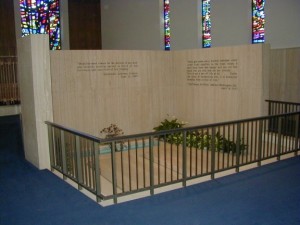 The Final Footprint – Eisenhower is entombed in a small chapel, the Place of Meditation, on the grounds of the Eisenhower Presidential Library in Abilene, Kansas. The day following his death, his body was moved to the Washington National Cathedral’s Bethlehem Chapel where he lay in repose for twenty-eight hours. On March 30, his body was brought by caisson to the United States Capitol where he lay in state in the Capitol Rotunda. On March 31, Eisenhower’s body was returned to the National Cathedral where he was given an Episcopal Church funeral service. That evening, Eisenhower’s body was placed onto a train en route to Abilene. Nixon, by this time president himself, said of Eisenhower’s death; “Some men are considered great because they lead great armies or they lead powerful nations. For eight years now, Dwight Eisenhower has neither commanded an army nor led a nation; and yet he remained through his final days the world’s most admired and respected man, truly the first citizen of the world.” There are many tributes and memorials to Eisenhower. My personal favorite being the Eisenhower tree which overhangs the 17th fairway at Augusta National Golf Club, where he was a member. Evidently the tree proved to be quite an obstacle for him when he played.
The Final Footprint – Eisenhower is entombed in a small chapel, the Place of Meditation, on the grounds of the Eisenhower Presidential Library in Abilene, Kansas. The day following his death, his body was moved to the Washington National Cathedral’s Bethlehem Chapel where he lay in repose for twenty-eight hours. On March 30, his body was brought by caisson to the United States Capitol where he lay in state in the Capitol Rotunda. On March 31, Eisenhower’s body was returned to the National Cathedral where he was given an Episcopal Church funeral service. That evening, Eisenhower’s body was placed onto a train en route to Abilene. Nixon, by this time president himself, said of Eisenhower’s death; “Some men are considered great because they lead great armies or they lead powerful nations. For eight years now, Dwight Eisenhower has neither commanded an army nor led a nation; and yet he remained through his final days the world’s most admired and respected man, truly the first citizen of the world.” There are many tributes and memorials to Eisenhower. My personal favorite being the Eisenhower tree which overhangs the 17th fairway at Augusta National Golf Club, where he was a member. Evidently the tree proved to be quite an obstacle for him when he played.
#RIP #OTD in 1974 librettist, lyricist (“The Way You Look Tonight”, “A Fine Romance”, “On the Sunny Side of the Street”, “Don’t Blame Me”, “Pick Yourself Up”, “I’m in the Mood for Love”) Dorothy Fields died of a heart attack in New York City, age 69. Lahm private mausoleum Maimonides Cemetery, Brooklyn
#RIP #OTD in 1974 opera singer, diseuse, actress (Crainquebille, La Kermesse Heroïque, Pension Mimosas, Un Carnet de Bal, Une Femme Disparaît, Saraband for Dead Lovers, La Reine Margot, The Seventh Sin, Up From the Beach, Pas Folle la Guêpe, Carnival in Flanders, The Pedestrian) Françoise Rosay died in Montgeron, Île-de-France, near Paris aged 82. Cimetière Sorel-Moussel, Île-de-France
| Marc Chagall | |
|---|---|
On this day in 1985, artist Marc Chagall died in Saint-Paul-de-Vence, France at the age of 97. Born Moishe Zakharovich Shagal on 6 July [O.S. 24 June] 1887 in Liozna, near Vitebsk, Russian Empire (presetn day Belarus. An early modernist, he was associated with several major artistic styles and created works in virtually every artistic format, including painting, book illustrations, stained glass, stage sets, ceramic, tapestries and fine art prints.
Before World War I, he travelled between Saint Petersburg, Paris, and Berlin. During this period he created his own mixture and style of modern art based on his idea of Eastern European Jewish folk culture. He spent the wartime years in Soviet Belarus, becoming one of the country’s most distinguished artists and a member of the modernist avant-garde, founding the Vitebsk Arts College before leaving again for Paris in 1922.
He experienced modernism’s “golden age” in Paris, where “he synthesized the art forms of Cubism, Symbolism, and Fauvism, and the influence of Fauvism gave rise to Surrealism”. Yet throughout these phases of his style his work was one long dreamy reverie of life in his native village of Vitebsk. “When Matisse dies,” Pablo Picasso remarked in the 1950s, “Chagall will be the only painter left who understands what colour really is”.
Before leaving for Paris, Chagall became engaged to Bella Rosenfeld. He accepted an invitation from a noted art dealer in Berlin to exhibit his work, his intention being to continue on to Belarus, marry Bella, and then return with her to Paris. After the exhibit, he continued on to Vitebsk, where he planned to stay only long enough to marry Bella. However, after a few weeks, the First World War began, closing the Russian border for an indefinite period. A year later he married Bella. Before the marriage, Chagall had difficulty convincing Bella’s parents that he would be a suitable husband for their daughter. They were worried about her marrying a painter from a poor family and wondered how he would support her. Becoming a successful artist now became a goal and inspiration. His paintings of this time, show the young couple floating balloon-like over Vitebsk are the most lighthearted of his career. His wedding pictures were also a subject he would return to in later years as he thought about this period of his life.
On 2 September 1944, Bella died suddenly due to a virus infection, which was not treated due to the wartime shortage of medicine. As a result, he stopped all work for many months, and when he did resume painting his first pictures were concerned with preserving Bella’s memory. Apparently, as news poured in through 1945 of the ongoing Holocaust at Nazi concentration camps, Bella took her place in Chagall’s mind with the millions of Jewish victims. He perhaps even considered the possibility that their “exile from Europe had sapped her will to live.
A few months after the Allies succeeded in liberating Paris from Nazi occupation, with the help of the Allied armies, Chagall published a letter in a Paris weekly, “To the Paris Artists”:
After a year, he entered into a romance with Virginia Haggard. Their relationship endured seven years. Haggard recalled her “seven years of plenty” with Chagall in her book, My Life with Chagall (Robert Hale, 1986).
In April 1952, Virginia Haggard left Chagall for the photographer Charles Leirens; she went on to become a professional photographer herself.
Chagall’s daughter Ida introduced him to Valentina (Vava) Brodsky, a woman from a similar Russian Jewish background, who had run a successful millinery business in London. She became his secretary, and after a few months agreed to stay only if Chagall married her. The marriage took place in July 1952, though six years later, when there was conflict between Ida and Vava, Chagall and Vava divorced and immediately remarried under an agreement more favourable to Vava.
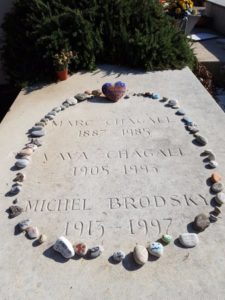 The Final Footprint
The Final Footprint
He would have died without Jewish rites, had not a Jewish stranger stepped forward and said the kaddish, the Jewish prayer for the dead, over his coffin. Chagall is buried alongside his last wife Valentina “Vava” Brodsky Chagall, in the multi-denominational cemetery in the traditional artists’ town of Saint Paul de Vence, in the French region of Provence.
Gallery
#RIP #OTD in 2004 filmmaker, writer, raconteur, actor (Spartacus, Topkapi, Quo Vadis, The Sundowners, Billy Budd, Hercule Poirot in Death on the Nile) Peter Ustinov died of heart failure in a clinic in Genolier, near his home in Bursins, Switzerland, aged 82. Cimetière de Bursins
Have you planned yours yet?
Follow TFF on twitter @RIPTFF


